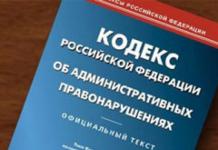195 years ago, on April 17, 1824, a Russian-American convention was signed in St. Petersburg to determine the boundaries of Russian possessions in North America. By this time, there were a number of Russian settlements on the North American continent - in Alaska, the Aleutian Islands, the Alexander Archipelago and on the Pacific coast.
This whole long-standing story, first with the delimitation of Alaska, and then with its sale to the United States, has acquired an incredible number of legends. How did things turn out in reality? Who actually legally owns Alaska? Is it true that Russia never received money for its sale?
How Russia acquired Alaska
Alaska is even now a primitive, wild nature, fjords, snow-capped mountain slopes. On October 22, 1784, an expedition led by the Irkutsk merchant Grigory Shelikhov founded the first permanent settlement on Kodiak Island off the coast of Alaska. In 1795, colonization of mainland Alaska began. Four years later, the future capital of Russian America, Sitka, was founded. 200 Russians and 1000 Aleuts lived there.
In 1798, as a result of the merger of the companies of Grigory Shelikhov and merchants Nikolai Mylnikov and Ivan Golikov, the Russian-American Company was formed. Its shareholder and first director was Commander Nikolai Rezanov. The same one about whose love for the young daughter of the commandant of the San Francisco fortress, Conchita, the rock opera “Juno and Avos” was written. The company's shareholders were also the top officials of the state: grand dukes, heirs of noble families, famous statesmen.
By decree of Paul I, the Russian-American Company received the authority to manage Alaska, represent and protect the interests of Russia. It was assigned a flag and allowed to have armed forces and ships. She had monopoly rights for a period of 20 years for fur extraction, trade, and the discovery of new lands. In 1824, Russia entered into an agreement that established the borders between Russian America and the United States.
Map of the territories of Northwestern America transferred by the Russian Empire to the North American United States in 1867
Sold? Rented?
The history of the sale of Alaska is surrounded by an incredible number of myths. There is even a version that it was sold by Catherine the Great, who by that time had already completed her earthly journey for 70 years. So this fairy tale can only be explained by the popularity of the group “Lube” and its song “Don’t be a fool, America,” which contains the line “Ekaterina, you were wrong!”
According to another legend, Russia did not sell Alaska at all, but leased it to America for 99 years, and then either forgot or was unable to demand it back. Perhaps some of our compatriots do not want to come to terms with this, but they will have to. Alas, Alaska was indeed sold. An agreement on the sale of Russian possessions in America with a total area of 580,107 square kilometers was concluded on March 18, 1867. It was signed in Washington by US Secretary of State William Seward and Russian envoy Baron Eduard Stekl.
The final transfer of Alaska to the United States took place on October 18 of that year. The Russian flag was ceremoniously lowered over Fort Sitka and the American flag was raised.


 The instrument of ratification signed by Emperor Alexander II and deposited in the United States National Archives and Records Administration. The first page contains the full title of Alexander II
The instrument of ratification signed by Emperor Alexander II and deposited in the United States National Archives and Records Administration. The first page contains the full title of Alexander II
Gold mine or unprofitable project
Historians have debated whether the sale of Alaska was justified. After all, this is simply a storehouse of marine resources and minerals! Geologist Vladimir Obruchev claimed that in the period before the Russian Revolution alone, the Americans mined $200 million worth of precious metal there.
However, this can only be assessed from current positions. And then...
Large deposits of gold had not yet been discovered, and the main income came from the extraction of furs, especially sea otter fur, which was highly valued. Unfortunately, by the time Alaska was sold, the animals were practically exterminated, and the territory began to generate losses.
The region developed very slowly; the vast snow-covered expanses could not be protected and developed in the foreseeable future. After all, the Russian population of Alaska at the best of times did not reach a thousand people.
Moreover, the fighting in the Far East during the Crimean War showed the absolute insecurity of the eastern lands of the Russian Empire and especially Alaska. Fears arose that Russia's main geopolitical opponent, Britain, would simply seize these lands.
“Creeping colonization” also took place: British smugglers began to settle on the territory of Russian America in the early 1860s. The Russian ambassador in Washington informed his homeland about the impending emigration of representatives of the Mormon religious sect from the United States to Russian America... Therefore, in order not to lose the territory in vain, it was decided to sell it. Russia simply did not have the resources to defend its overseas possessions at a time when the vast Siberia also required development.
 A check for US$7.2 million presented to pay for the purchase of Alaska. The check amount is approximately equivalent to 2014 US$119 million
A check for US$7.2 million presented to pay for the purchase of Alaska. The check amount is approximately equivalent to 2014 US$119 million
Where did the money go?
The most fantastic thing is the story of the disappearance of money paid to Russia for Alaska. According to the most popular version, which exists on the Internet, Russia did not receive gold from America because it sank along with the ship carrying it during a storm.
So, the territory of Alaska with an area of 1 million 519 thousand square meters. km was sold for $7.2 million in gold. The Russian Ambassador to the United States, Eduard Stekl, received a check for this amount. For the transaction, he received a reward of $25,000. He allegedly distributed 144 thousand as bribes to senators who voted for ratification of the treaty. After all, not everyone in the United States considered the purchase of Alaska a profitable business. There were many opponents of this idea. However, the story about bribes has not been officially confirmed.
The common version is that the rest of the money was sent to London by bank transfer. There, gold bars were purchased for this amount. But the most important thing is that the barque Orkney, which allegedly carried these ingots from Russia, sank on July 16, 1868 on the approach to St. Petersburg. No gold was found during the search operation.
However, this detailed and brilliant story will also have to be recognized as a legend. The State Historical Archive of the Russian Federation contains documents from which it follows that the money was placed in European banks and included in the railway construction fund. This is what they say: “In total, 12,868,724 rubles 50 kopecks were designated for transfer from the US Treasury.” Part of the funds was spent on the Russian-American company. She received 1,423,504 rubles 69 kopecks. What follows is a detailed account of where this money went: for the transportation of employees and payment of part of their salaries, for the debts of the Orthodox and Lutheran churches, part of the money was turned into customs income.
What about the rest of the money? And here’s what: “By March 1871, 10,972,238 rubles 4 kopecks were spent on the purchase of accessories for the Kursk-Kyiv, Ryazan-Kozlov and Moscow-Ryazan railways. The balance is 390,243 rubles 90 kopecks. received in cash to the State Treasury of Russia."
So the vivid and widely circulated story about the sunken barque with gold bars is just a historical fiction. But what a great idea!
 Signing of the treaty for the sale of Alaska on March 30, 1867. From left to right: Robert S. Chu, William G. Seward, William Hunter, Vladimir Bodisko, Edward Stekl, Charles Sumner, Frederick Seward.
Signing of the treaty for the sale of Alaska on March 30, 1867. From left to right: Robert S. Chu, William G. Seward, William Hunter, Vladimir Bodisko, Edward Stekl, Charles Sumner, Frederick Seward.
149 years ago, on October 18, 1867, the Russian Empire officially transferred its territories on the Alaska Peninsula to the United States of America. Ilya Shatin figured out how much we got for it, and how much it would cost to buy Alaska back.
There are a lot of myths in the popular consciousness about the sale of Alaska. One of them claims that the Russian North American territories, which now belong to the state of Alaska, were sold to the United States of America by Empress Catherine the Great. And this, of course, is complete nonsense. It is only in the soulful songs of Nikolai Rastorguev and the Lyube group that such nonsense is sung. In fact, Alaska was sold almost a century after the death of the Grand Empress.
The origins of the formation of this myth and its connection with the image of the dissolute and flighty ruler of Russia is a separate interesting topic. But everyone is much more concerned about the question: “Why was Alaska sold so cheap?” Let’s figure out whether this is true, and how much today, purely theoretically, one could buy it back.
So, according to the “Highly Ratified Convention on the Cession of the Russian North American Colonies to the United States of America”, signed “by God’s hastening grace” in the city of Washington (DC, District of Columbia), March 18 (30), 1867 between the proxies of Autocrat Alexander II and US President Andrew Johnson - the territory of Alaska was torn away from the Russian Empire for “seven million two hundred thousand dollars in gold coin.” At that time it was approximately 11 million Russian rubles. By the way, the United States had to pay such a significant amount to the Russian Crown in just 9 months.
But in order to answer our main question: “isn’t it cheap?”, it is much more interesting to find out how much the Russian ruble was worth at that time? Or rather, what was his purchasing power? According to such an interesting source as the magazine “Pskov Provincial Gazette” (No. 40, dated Wednesday, October 5, 1838), the cost of individual goods on the market in “petty sale” was: “Lifland beef pound - 0.15 rubles. Russian beef - 0.14 rub. Live goose - 1.20 rubles.”
A pound is about 0.45 kg. Accordingly, a kilogram of Livlyandskaya beef, for example, then cost about 0.31 rubles. Today, “Farm beef pulp (hip part)” in the Azbuka Vkusa store costs 757 rubles per kilogram; in the “democratic” Auchan the price is 300 rubles per kilo. This means that the average market price of a kilogram of beef in Moscow (without economic adjustments) is 528 rubles 50 kopecks. Therefore, a ruble from 1838 would be worth approximately 1,700 modern Russian rubles today. This means that today, with the same agreements, we would receive about 18.7 billion modern Russian rubles for Alaska.

But let's not forget that this is not the “gold ruble” of 1867. Here we will make a short remark that in 1867 (is it a coincidence?) “Simultaneously with a significant improvement in appearance and workmanship, the coin stack (we are talking about a stack of precious metal coins that make up the ruble as a unit) increased to 50 rubles, existing in this form until 1917.” This means that the gold ruble was clearly worth much more than its paper equivalent.
Some experts even suggest converting this entire “economy” into gold. An ounce of gold (31.1 grams) in the USA in 1867 cost $20.7 - which means that the US government gave about 11 tons of gold (345,000 ounces of gold) for Alaska. In 2016, the price of this precious metal fluctuates greatly, but in September an ounce of gold on average cost about 1,273 US dollars or about 81,472 rubles. Accordingly, in gold equivalent, Alaska today is worth about 440 million dollars or more than 28 billion Russian rubles.
For the sake of comparison, according to Article 6 of the Budget of the Russian Federation “Budget allocations of the federal budget of the Russian Federation for 2016”, the total volume of budget revenues for 2016 is expected to be 13.7 trillion rubles. And only about 0.2% of national revenues would have to be spent on buying out Alaska.
But we can cope on our own: if every Russian, and if you believe the statistics, then in 2016 there are no more than 146,519,759 people, contributes only 191 rubles and 80 kopecks to the common fund, then with certain agreements at the international level it will be possible to buy back Alaska from the USA.
150 years ago, on October 18, 1867, in the city of Novoarkhangelsk (now called Sitka), the Russian flag was lowered and the US flag was raised. This symbolic ceremony sealed the transfer of our American territories to the United States. Alaska Day is a holiday celebrated in the state on October 18th. However, disputes about the advisability of selling the territory have not subsided to this day. Why Russia abandoned its possessions in America - in the RT material.
- Signing of the Treaty for the Sale of Alaska, March 30, 1867
- © Emanuel Leutze / Wikimedia Commons
In the early 60s of the 19th century, Russia was in crisis, which was associated with defeat in the Crimean War (1853-1856). Russia suffered, if not a crushing, but extremely unpleasant defeat, which exposed all the disadvantages of the political and economic system.

This land was ours: how Alaska was sold
On March 30, 1867, an agreement was signed in Washington on the sale by Russia of Alaska and the Aleutian Islands to the United States of America. Solution…
Much needed reforming. Nicholas I, who died before the end of the war, left his heir, Alexander II, many unresolved issues. And to get out of the crisis, boost the economy and restore authority in the international arena, strength and money were required.
Against this background, Alaska did not look like a profitable asset. The economic rationale for the development of American territories was primarily the fur trade. However, by the middle of the 19th century this resource was largely exhausted. Russian industrialists, being far from the “sovereign eye,” did not care about preserving natural wealth. The sea animal sea otter, whose fur represented the most valuable resource, was already on the verge of destruction due to uncontrolled fishing.
Pragmatic calculation
Neither the Russian government nor the residents of Russian Alaska had any idea that the region was rich in gold and oil. And the value of oil in those years was not at all the same as it is today. Alaska was located many months by sea from St. Petersburg, so the government had no real ability to control it. Skeptics can also be reminded that Russia properly began to develop the northeast of the Asian part of the country only in the Soviet years. It is unlikely that Alaska would have been developed faster and more efficiently than Chukotka.

- Russian church on Kodiak Island off the southern coast of Alaska. The ground is covered in volcanic ash after the eruption of Mount Katmai
- © The Library of Congress
Finally, only shortly before the sale of Alaska, Russia concluded the Aigun and Beijing treaties. According to them, the state included significant territories of the Far East, all of present-day Primorye, a significant part of the modern Khabarovsk Territory and the Amur Region. All these lands required intensive development (this is precisely why Vladivostok was founded).
The Aigun Treaty was the merit of an outstanding administrator, the Governor-General of Eastern Siberia, Count Nikolai Muravyov-Amursky, whom every Russian today knows by the image of his monument on the five-thousandth banknote. It was he who initiated the idea of selling Alaska. And it’s hard to blame Muravyov-Amursky for his lack of patriotism. His position boiled down to a rational choice, well expressed in the proverb “If you chase two hares, you won’t catch either.”

- "Map of the Arctic Sea and Eastern Ocean", drawn up in 1844
- © The Library of Congress
Russia had to either gain a foothold in the rich Far East, or continue to cling to remote Alaska. The government understood: if the Americans or the British from neighboring Canada took the remote outpost seriously, it would not be possible to fight on equal terms with them - the distances were too great to transport troops, the infrastructure was too vulnerable.
Alaska in exchange for empire
The sale of remote territories was not some unique Russian practice. At the beginning of the 19th century, France sold the United States a much warmer Louisiana, closer to the metropolis and rich in obvious resources at that time. Recent and not the best examples were Texas and California, which Mexico ceded for next to nothing after direct American aggression. Between the Louisiana and Texas options, Russia chose the first.
To gallery page
In the 60s of the 19th century, the United States and Russia were at the peak of friendly relations. Reasons for political conflicts between states have not yet appeared; moreover, Russia supported Washington during the civil war. Therefore, negotiations on the sale of Alaska took place in a calm tone and on mutually beneficial terms, although there was some bargaining. The United States did not exert any pressure on Russia, and did not have any grounds or tools for this. The transfer of American territories to the United States, although secret, became a completely transparent deal for the participants themselves.
Russia received about 11 million rubles for Alaska.
The amount was significant at that time, but still they gave less for Alaska than, for example, for Louisiana. Even taking into account such a “thrift” price on the American side, not everyone was sure that the purchase would justify itself.
The money received for Alaska was spent on the railway network, which was then just being built in Russia.
So, thanks to this deal, the Russian Far East developed, railways were built, and the successful reforms of Alexander II were carried out, which provided Russia with economic growth, returned international authority and made it possible to get rid of the consequences of defeat in the Crimean War.
Dmitry Fedorov
There are a lot of myths in the popular consciousness about the sale of Alaska. One of them claims that the Russian North American territories, which now belong to the state of Alaska, were sold to the United States of America by Empress Catherine the Great. And this, of course, is complete nonsense. It is only in the soulful songs of Nikolai Rastorguev and the Lyube group that such nonsense is sung. In fact, Alaska was sold almost a century after the death of the Grand Empress.
The origins of the formation of this myth and its connection with the image of the dissolute and flighty ruler of Russia is a separate interesting story. But everyone is much more concerned about the question: “Why was Alaska sold so cheap?” Let’s figure out whether this is true, and how much today, purely theoretically, one could buy it back.
So, according to the “Highly Ratified Convention on the Cession of the Russian North American Colonies to the United States of America”, signed “by God’s hastening grace” in the city of Washington (DC, District of Columbia), March 18 (30), 1867 between the proxies of Autocrat Alexander II and US President Andrew Johnson - the territory of Alaska was torn away from the Russian Empire for “seven million two hundred thousand dollars in gold coin.” At that time it was approximately 11 million Russian rubles. By the way, the United States had to pay such a significant amount to the Russian Crown in just 9 months.
But in order to answer our main question: “isn’t it cheap?”, it is much more interesting to find out how much the Russian ruble was worth at that time? Or rather, what was his purchasing power? According to such an interesting source as the magazine “Pskov Provincial Gazette” (No. 40, dated Wednesday, October 5, 1838), the cost of individual goods on the market in “petty sale” was: “Lifland beef pound - 0.15 rubles. Russian beef - 0.14 rub. Live goose - 1.20 rubles.”
A pound is about 0.45 kg. Accordingly, a kilogram of Livlyandskaya beef, for example, then cost about 0.31 rubles. Today, “Farm beef pulp (hip part)” in the Azbuka Vkusa store costs 757 rubles per kilogram; in the “democratic” Auchan the price is 300 rubles per kilo. This means that the average market price of a kilogram of beef in Moscow (without economic adjustments) is 528 rubles 50 kopecks. Therefore, a ruble from 1838 would be worth approximately 1,700 modern Russian rubles today. This means that today, with the same agreements, we would receive about 18.7 billion modern Russian rubles for Alaska.

But let's not forget that this is not the “gold ruble” of 1867. Here we will make a short remark that in 1867 (is it a coincidence?) “Simultaneously with a significant improvement in appearance and workmanship, the coin stack (we are talking about a stack of precious metal coins that make up the ruble as a unit) increased to 50 rubles, existing in this form until 1917.” This means that the gold ruble was clearly worth much more than its paper equivalent.
Some experts even suggest converting this entire “economy” into gold. An ounce of gold (31.1 grams) in the USA in 1867 cost $20.7 - which means that the US government gave about 11 tons of gold (345,000 ounces of gold) for Alaska. In 2016, the price of this precious metal fluctuates greatly, but in September an ounce of gold on average cost about 1,273 US dollars or about 81,472 rubles. Accordingly, in gold equivalent, Alaska today is worth about 440 million dollars or more than 28 billion Russian rubles.
For the sake of comparison, according to Article 6 of the Budget of the Russian Federation “Budget allocations of the federal budget of the Russian Federation for 2016”, the total volume of budget revenues for 2016 is expected to be 13.7 trillion rubles. And only about 0.2 would have to be spent on the redemption of Alaska % of national income.
But we can cope on our own: if every Russian, and if you believe the statistics, then in 2016 there are no more than 146,519,759 people, contributes only 191 rubles and 80 kopecks to the common fund, then with certain agreements at the international level it will be possible to buy back Alaska from the USA.
They asked about the prospects for Alaska joining Russia. AiF.ru decided to remind readers when Alaska was sold to whom and why.
On April 17, the Russian President was asked a question about the sale of Alaska during the Direct Line. Vladimir Putin said that he considers talk about the need to return Alaska, which was sold to the United States a century and a half ago, to Russia as frivolous. “Let's not get excited. They’ll have to pay the northern ones there,” Vladimir Putin joked, answering the question.
Background
April 17, 1824 in St. Petersburg Foreign Minister of the Russian Empire Karl Nesselrode And US Envoy Henry Middleton signed an agreement between Russia and the United States to determine the border of Russian territories in North America.
This treaty demarcated the territory between Russia and the United States. According to it, the border was established along the parallel of 54 degrees 40 minutes north latitude. The Russians pledged not to settle to the south, and the Americans - to the north of this line.
Signing of the treaty for the sale of Alaska on March 30, 1867. From left to right: Robert S. Chu, William G. Seward, William Hunter, Vladimir Bodisko, Edward Stekl, Charles Sumner, Frederick Seward. Photo: Commons.wikimedia.org
After Russia's defeat in the Crimean War (1853-1856), the US government began to seek the acquisition of Russian possessions in North America. In March 1867, an agreement was signed on the sale by Russia of Alaska and the Aleutian Islands to the United States for $7.2 million.
In March 1867 the government Emperor Alexander II decided to sell Alaska (with an area of 1.5 million sq. km) for 11.362 million rubles in gold (about 7.2 million dollars).
Money for Alaska was transferred only in August 1867.
After the signing of the treaty, the entire Alaska Peninsula, a coastal strip 10 miles wide south of Alaska along the western coast of British Columbia, was transferred to the United States; Alexandra Archipelago; Aleutian Islands with Attu Island; the islands of Blizhnye, Rat, Lisya, Andreyanovskiye, Shumagina, Trinity, Umnak, Unimak, Kodiak, Chirikova, Afognak and other smaller islands; Islands in the Bering Sea: St. Lawrence, St. Matthew, Nunivak and the Pribilof Islands - St. George and St. Paul.

Manifesto of Alexander II (title page). commons.wikimedia.org/ U.S. National Archives and Records Administration
Why did Russia agree to sell Alaska to the United States?
What was the true reason for the sale of Alaska is still unknown. According to one version, the emperor made this deal to pay off his debts. In 1862, Alexander II was forced to borrow £15 million from the Rothschilds at 5% per annum. There was nothing to return, and then Grand Duke Konstantin Nikolaevich - the Sovereign’s younger brother - offered to sell “something unnecessary.” Alaska turned out to be an unnecessary thing in Russia.
In addition to Emperor Alexander II, only five people knew about the deal: his brother Grand Duke Constantine, Finance Minister Mikhail Reitern, Naval Ministry manager Nikolai Krabbe, Foreign Minister Alexander Gorchakov and the Russian envoy to the United States Eduard Stekl. The latter had to bribe former US Treasury Secretary Walker $16,000 for lobbying for the idea of purchasing the territory of Alaska.
Other versions of the sale include the approaching crisis in the country. The general state of Russia's finances, despite the reforms carried out in the country, was deteriorating, and the treasury needed foreign money. One year before the transfer of Alaska Finance Minister Mikhail Reitern sent a special note to Alexander II, in which he pointed out the need for the strictest savings. His appeal stated that for the normal functioning of the empire a three-year foreign loan of 15 million rubles was required. in year.
Before this, the idea to sell Alaska was hatched by the Governor-General of Eastern Siberia, Muravyov-Amursky. He said that it would be in Russia's interests to improve relations with the United States to strengthen its position on the Asian Pacific coast, and to be friends with America against the British.


























